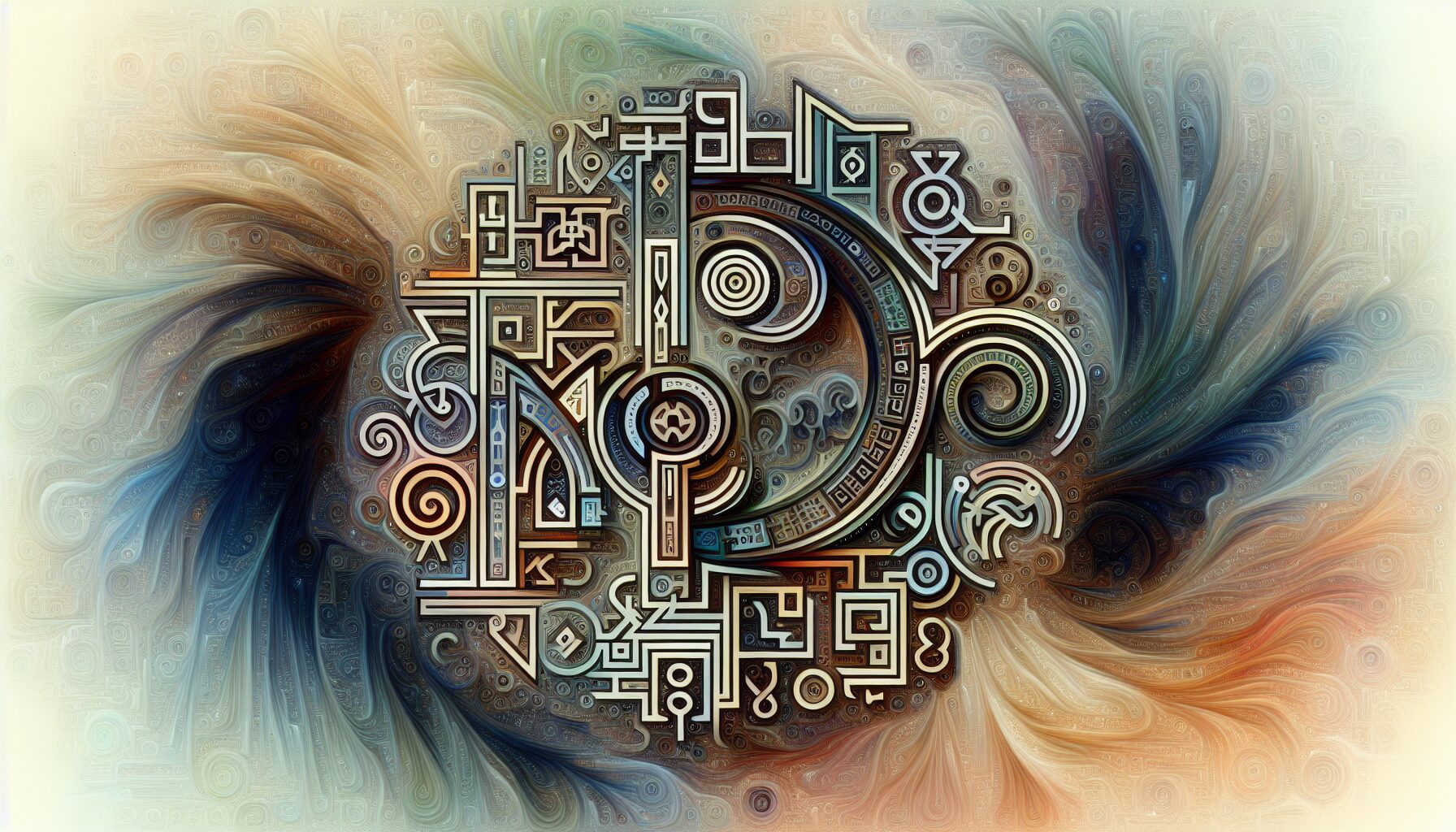Runes are ancient symbols that hold a mystic allure through their complex and enigmatic nature. Often associated with Northern European cultures, these symbols have transcended their historical roots to become a powerful element in modern mysticism and artistic expression. Runes have traditionally been employed not just as an alphabet, but as tools of divination, symbols of power, and gateways into the unknown realms.
“Runes embody the universal energies and experiences of life. They are abstract, esoteric, and connect us to the ineffable.” – Freya Aswynn, British author and practitioner of Germanic Neopaganism.
The allure of runes lies in their abstract symbolism, which goes beyond the mere conveyance of linguistic messages. Each rune carries a meaning, a story that connects with fundamental aspects of life, nature, and the cosmos. Collectively, they form a language of symbolism that continues to mystify and inspire.
The Origin of Runes
The earliest runes date back to around 150-800 AD and are part of the Futhark family. The most well-known versions are the Elder Futhark and Younger Futhark. Each rune is made up of straight lines, a design choice likely made for ease of carving into wood, stone, or bone.
- Elder Futhark: Consisting of 24 runes, it is the oldest form of the runic alphabets and was widely used before the Christianization of Scandinavia.
- Younger Futhark: This simplified version contains only 16 characters and was developed around the 9th century.
While runes were used for practical communication, they also held magical properties for the Germanic peoples, serving as potent talismans and instruments of mystical operations.
Runes in Divination and Magic
In modern times, runes are often used in divination, much like tarot cards and astrology. Each rune embodies a specific archetype or energy, representing different facets of the human experience. For instance:
- Fehu: Signifies wealth and abundance, often associated with material gain.
- Uruz: Represents strength, health, and the untamed power of nature.
- Raido: Symbolizes the journey of life, travel, and rhythm.
When used in divination, these symbols invite the practitioner to engage in reflection, tapping into their subconscious to garner insights and guidance. They are drawn with hands veiled in reverence, acknowledging the energies they represent.
Magic and runes are inseparably intertwined. Norse mythology hints at the runes as gifts to humanity from the gods, with Odin himself said to have discovered them by sacrificing himself on the Yggdrasil, the World Tree. This myth underscores the divine nature of these symbols and their role as mediums between the human and divine.
Modern Interpretations and Artistic Expression
Today, runes have found a place in modern culture, extending beyond their original spiritual use. They appear in various forms of contemporary media, illustrating their persistent and versatile nature. Runes are featured in artworks, tattoos, and even digital media, each new context breathing fresh interpretations and meanings into these ancient symbols.
For instance, runes have become a key element in the design of video games, such as in “God of War” and “The Elder Scrolls,” where they serve as both decorative and functional in-game elements. This broadens their reach to new generations, captivating them with a sense of mystery and ancient wisdom.
The Eternal Mystery of Abstract Runes
At the heart of the fascination with runes is their abstract nature. Unlike languages constrained by grammar and syntax, runes traverse beyond the linear confines of understanding. Their very ambiguity allows for diverse interpretations, resonating deeply with those who seek personal and spiritual growth.
“The runes themselves are not just letters, but keys to unlocking the mysteries of the universe and the soul.” – Norse Mythology for Smart People
This abstract nature is both a challenge and a gift. It calls upon individuals to delve into their intuition, experiencing the runes not as static symbols but as dynamic forces woven into the fabric of existence. The true beauty of runes lies in this mystical dance of understanding and the perpetual discovery of the unknown.
Conclusion
Runes, with all their mystery and magic, remain an enticing realm for explorers of the mind and spirit. They remind us of our connection to nature and the divine, urging us to look beyond the visible and the known. In understanding these abstract symbols, we embark on a journey not just of knowledge, but of existential curiosity and personal transformation.

Comments